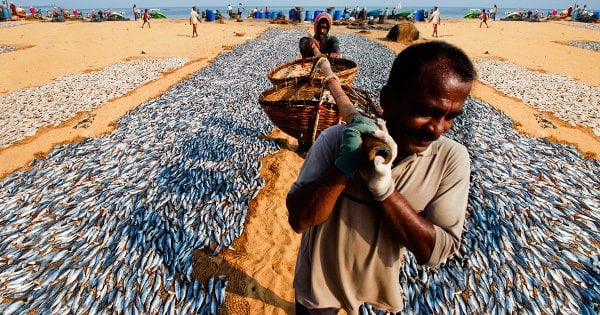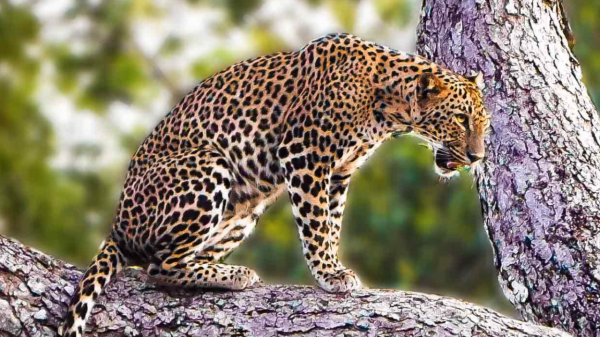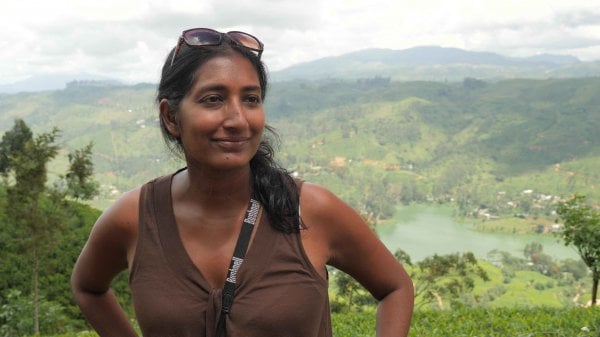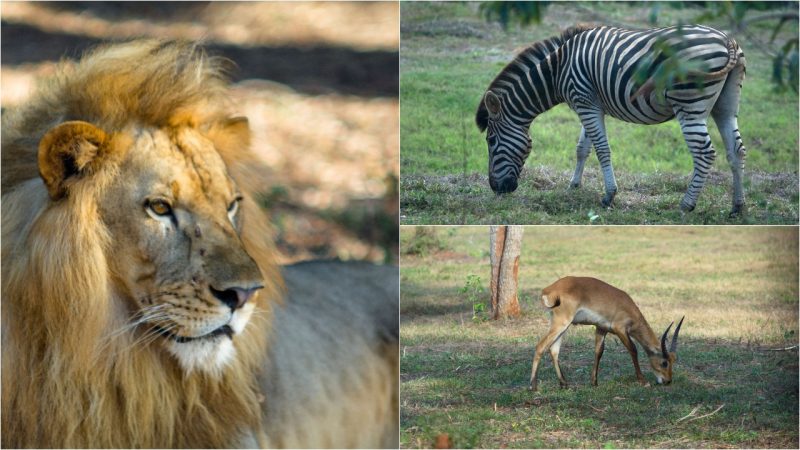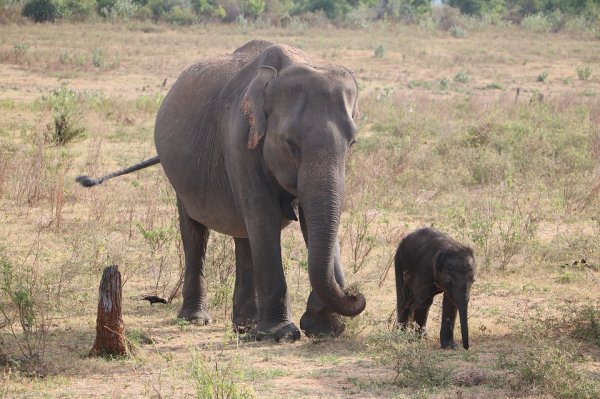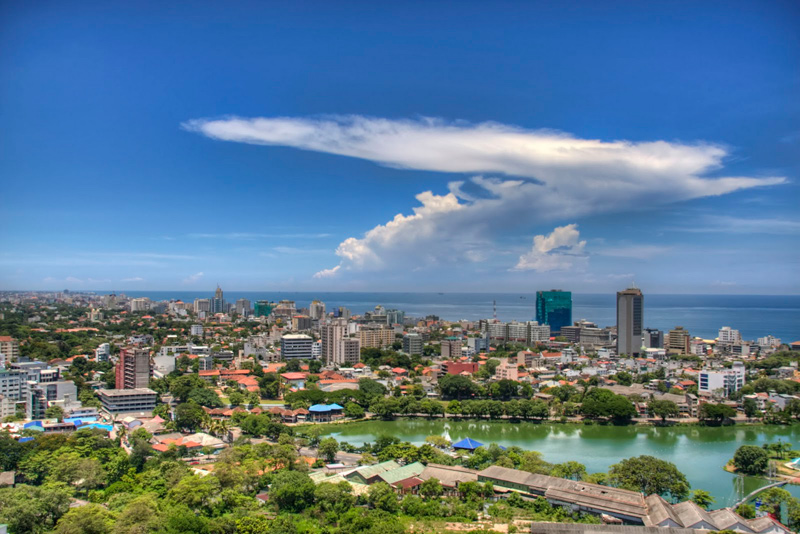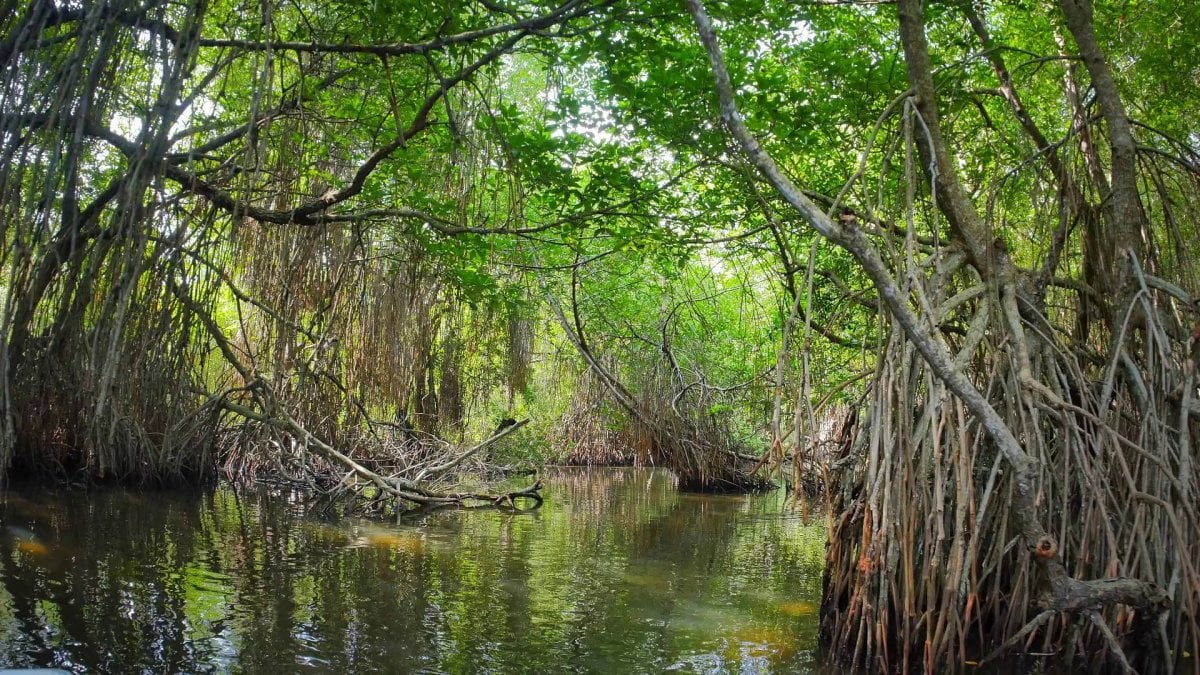
Sri Lanka, as we know, is a hotspot for biodiversity—it is home to so many different creatures and plants living in various ecosystems. The mangrove forests of the coastline are one such diverse ecosystem, and are one of the most biologically important ecosystems of the world.
Mangroves are species of shrubs and trees that grow near estuaries, and they can be identified by their distinctive, tangled roots. These trees and shrubs are quite resilient—they can grow in sand, muddy soil or coral rock, and can tolerate conditions of high-salinity in the ground.
Speaking to Roar Media, Douglas Tissera, Director of Conservation at Sudeesa (an organisation which was formerly known as the Small Fisheries Foundation of Sri Lanka), stated that approximately 15,000 hectares of land in Sri Lanka are covered with mangroves.
The lagoons and coasts of Puttalam, Chilaw, Mannar, Jaffna, Trincomalee and Batticaloa are some of the areas where these habitats can be found, with the Puttalam region having the largest area of mangrove cover in the country.
What Makes Mangroves So Important?

Mangroves in the Puttalam lagoon. Image courtesy asirediscover.blogspot.com
Mangroves forests are important for many different reasons. Firstly, they provide a habitat for a wide array of fish, prawns, birds, and other creatures. These ecosystems play a key role by being a connecting link between marine and terrestrial ecosystems. This link, in turn, maintains stability, not only in the mangrove habitats itself, but also in the other related coastal ecosystems, like seagrass beds and coral reefs. These trees and shrubs also provide nutrients to marine and terrestrial creatures.
Mangrove forests also help with the absorption of carbon dioxide more than equivalent areas of tropical rainforest, which makes these plants important in terms of maintaining the quality of air. They are also beneficial in preventing coastal erosion and stabilizing the coastline; the roots of the mangroves hold sand and sediment in place, and these shrubs and trees act as natural barriers which reduce the damage caused by tsunamis, hurricanes, and other natural disasters.
The Mangroves On Our Island
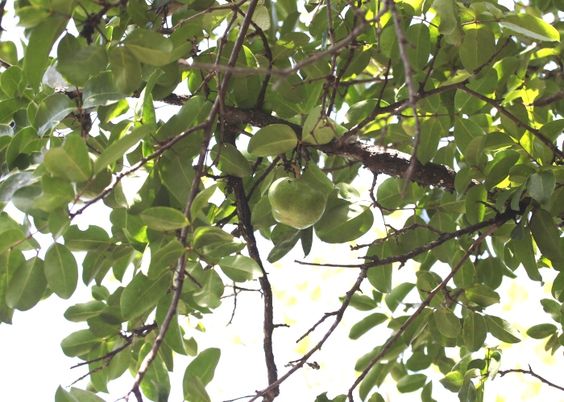
The cedar mangrove is one of the rare species of mangrove plants found in Sri Lanka. Image courtesy Pinterest/Ron Dass
Tissera told Roar Media that Sri Lanka is home to 22 different species of mangroves, and a large number of these species found in Sri Lanka belong to the genera Avicennia, Rhizophora, Bruguiera, and Sonneratia.
According to a research document compiled by the IUCN, some of the most common species of mangroves found in the island are: the grey mangrove (Avicennia marina), the black mangrove (Bruguiera gymnorrhiza), the milky mangrove (Excoecaria agallocha), the loop-root mangrove (Rhizophora mucronata), and the crabapple mangrove (Sonneratia caseolaris), which is known as kirala in Sinhalese.
A few other species which can be found here are categorized as rare species because they are in low abundance, and grow only in a few locations in the country. These rare species are: cedar mangrove (Xylocarpus granatum), Lumnitzera littorea and Scyphiphora hydrophyllacea.
“Different species of mangroves can be found in different parts of the country due to variations in the climate, the salinity of the water and the components and texture of the soil, among other factors. The largest number of these species can be found in the Puttalam lagoon. Twenty of the twenty two mangrove species found in Sri Lanka grow here,” said Tissera.
The wood of these plants is extremely valuable to the people who live near the lagoons where most of the mangroves can be found, as it is used as construction material and fuel. The leaves of these plants, too, are used for animal fodder and traditional medicine. A haven for biodiversity
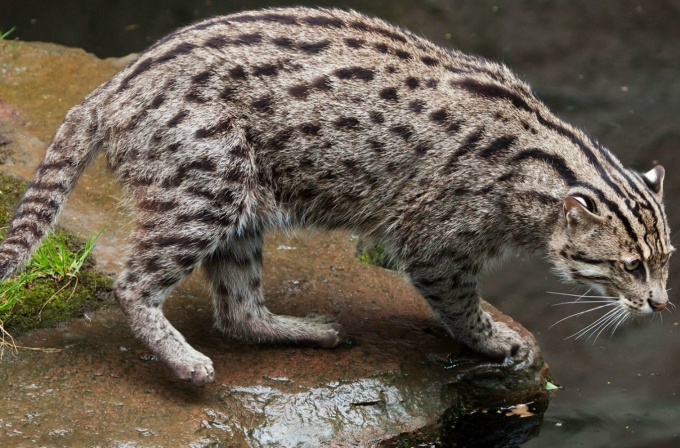
the fishing cat is one of the species which has can be found in some of the island’s mangroves. Image courtesy fodors.com
According to research done by the IUCN, five species of crabs and five species of prawns can be found in mangroves, along with a species of lobster known as the mud lobster (Thalassina anomala). Aside from these marine animals, species of birds such as herons, egrets, cormorants and kingfishers, and reptiles like the water monitor, better known as the kabaragoya in Sinhalese, the estuarine crocodile (Crocodylus porosus) and the mugger crocodile (Crocodylus palustris) can be observed in the mangrove forests of our country.
Several species of mammals, too, have made the mangroves their home: the purple-faced leaf monkey (Trachypithecus vetulus), the Sri Lankan golden palm cat (Paradoxurus zeylonensis), the Sri Lankan slender loris (Loris tardigradus), the fishing cat (Prionailurus viverrinus) and the Eurasian Otter (Lutra lutra) are a few examples. Certain species of bats and shrews, which are responsible for pollination in the mangroves, can be found here, too.
Freshwater fish, brackish water fish and marine-brackish water migratory fish are the three different groups of fish which live in these mangroves. According to the IUCN’s data, the group of marine-brackish water migratory fish include catadromous species, fish species that migrate from freshwater habitats to marine habitats for reproduction, and anadromous species, which move from marine environments to freshwater or brackish water habitats for spawning.
The short-finned eel (Anguilla bicolor) is one such catadromous species of fish which can be found in the mangroves, while species like snappers, surgeonfish and barracuda are some of the anadromous fish species which can be found in this ecosystem.
What The Law Has To Say About Mangrove Forests

The coastal zone management programme and the Coast Conservation and Coastal Resources Management Department are some of the legal conservation measures implemented to protect mangroves. Image courtesy srilankanscientist.com
Environmental Lawyer Jagath Gunawardana also revealed that Sri Lanka is one of the only countries in the world where mangrove forests present are protected by legal acts. Legal jurisdiction of the mangrove ecosystem falls under the Forest Department, Department of Wildlife Conservation, and the Coast Conservation Department.
The State Land Ordinance is one legal act which ensures that these coastal forests should be protected. Since mangroves are an ecosystem which are a part of the coast, like coral reefs and seagrass beds these habitats, too, are taken care of under the coastal zone management programme and the Coast Conservation and Coastal Resources Management Department.
Sadly, even with these legal acts in place, acres of mangroves in the country have been cleared away or have been degraded due to pollution.
The Greatest Causes Of Destruction
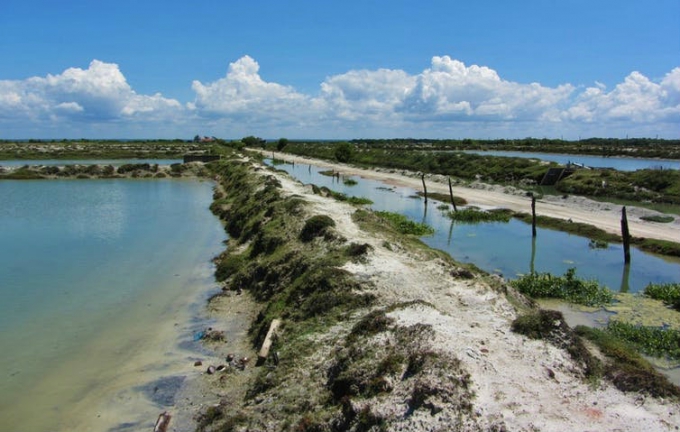
Shrimp farms, which required large areas of mangrove cover to be cleared away, were one of the greatest causes of the destruction of these coastal forests. Image courtesy theconversation.com
According to an article published by The Guardian in 2015, over the last 100 years, the world has witnessed the disappearance of half of its mangrove forests.
Sri Lanka, too, lost a large part of its mangrove forests during the civil war, and also due to shrimp farming. Between the late 1980s and the 1990s, the destruction of the country’s mangroves was officially sanctioned, as the government allowed private companies to clear away mangroves, in order to make room for shrimp farms along the northwestern coast. Around 40 percent of the mangroves in the Puttalam region were cleared and replaced by large ponds for shrimp farming.
In the recent past, the clearing away of mangroves for the purpose of construction projects is another reason which has lead to the destruction of this habitat. In 2012, such a project was initiated in the Thaladuwa area of Negombo. Eight acres of the mangroves in the Negombo lagoon were allocated for this development project, which included a housing scheme.
Tissera, who has worked on conserving and restoring some of the mangroves in the country for over three decades, pointed out that the hotel and tourism industry, too, was a factor which has contributed to the damage of these ecosystems.
“Over the past few decades, certain areas of the mangrove forests have been cleared away for the construction of hotels and for other ventures in the tourism industry,” he said.
Aside from the clearing away of these plants for construction, pollution—specifically through waste and chemicals released into the brackish and coastal waters of the mangrove habitats—is another issue. This affects not only the survival of these plants but also of the creatures that depend on them—and in turn the fishermen, whose livelihoods depends on the fish, crabs and prawns found among the mangroves.
But these aren’t the only contributing factors towards the destruction of mangroves—Gunawardana stated that local communities of the coasts and lagoons, too, are responsible.
“Sometimes too many of the trees are cut down for fuel and timber, or cleared away for agricultural purposes,” he said.
Community Action For Conservation And Restoration

Young mangrove plants like these are taken care of by women who are involved with Sudeesa’s mangrove conservation efforts. Image courtesy ipsnews.net
Even though large scale destruction of the island’s mangroves took place in the past, over the past three years measures have been taken to conserve and restore the mangrove habitats.
“Along with the financial help of Seacology, an island conservation organization that is based in the US, Sudeesa started replantation and conservation programmes [on the North Western coast],” Tissera told Roar Media.
With the assistance of Seacology, in the year 2015 Tissera’s organisation was able to expand its operations island-wide. The Government, too, signed on as a partner for this five-year US$ 3.4 million mangrove protection scheme. “Fourteen districts in the country contain mangrove forests, and over the past three years we have been able to conserve and also replant areas of the mangrove forests which had been degraded or destroyed,” Tissera added.
The main objectives of this country-wide project is not only to conserve and restore the country’s mangroves—it is also to provide financial assistance to over 15,000 people who belong to coastal communities.
In return for taking care of the mangroves and planting saplings of trees and shrubs in some of the severely affected areas, Sudeesa provides small loans to these people so that they can start up their businesses or seek alternative job training opportunities.
By getting local communities involved at a grass-root level, these conservation and restoration schemes have—to a certain extent—been able prevent the illegal clearing of mangroves for commercial purposes.
“Many of the fishermen understand the importance of the mangroves in the coastal environment—they believe that they are ‘the roots of the sea’ because they know that many varieties of aquatic creatures come to breed and grow in these habitats,” said Tissera.
A museum For Mangroves
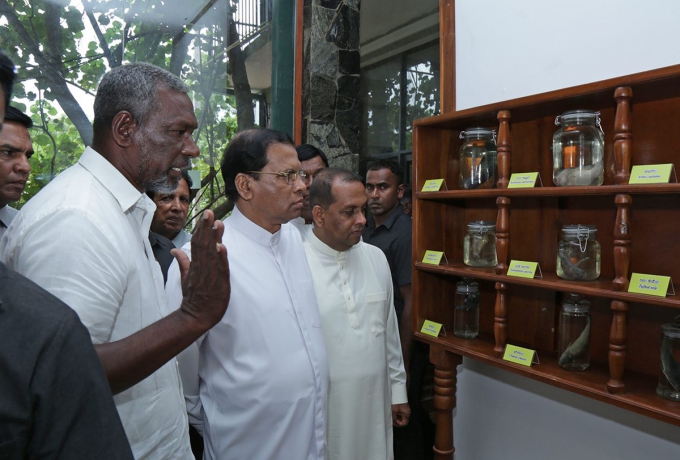
Sri Lanka made history on 26th July, 2016 went the world’s first Mangrove museum was opened in Pambala, Chilaw. Image courtesy seacology.org
The 26th of July 2016—World Mangrove Day—was a small victory for our country; it became the first country in the world to open up a museum especially curated for mangroves. This museum is located in Pambala, Chilaw, close to the Negombo-Chilaw Road.
The museum also serves as an educational tool for Sri Lankan school children, with the objective of making sure that the younger generation of Sri Lankans will better preserve the country’s coastal forests for posterity.
The museum contains exhibits of the different species of fish, prawns, crabs, sea snakes and other creatures which have made the mangroves their home. The mangroves surrounding the museum can be observed as well. The Pambala area of Chilaw also contains one of the three mangrove nurseries of the island where the young saplings are taken care of until they are ready to be planted in the wild. All twenty two species of mangrove plants in Sri Lanka can be found in this nursery. Saranagama in Mundel and Nachchikalliya in Kalpitiya are the areas where the other mangrove nurseries are located. All of the plants that were grown here have been distributed along the coastal belt over the past few years.
Sri Lanka’s mangroves may have suffered quite a lot of damage in the past, but with strong legal acts in place, and with the government and several activists getting involved in the restoration and protection of these habitats, there may yet be hope.
Featured Image courtesy videoblocks.com


